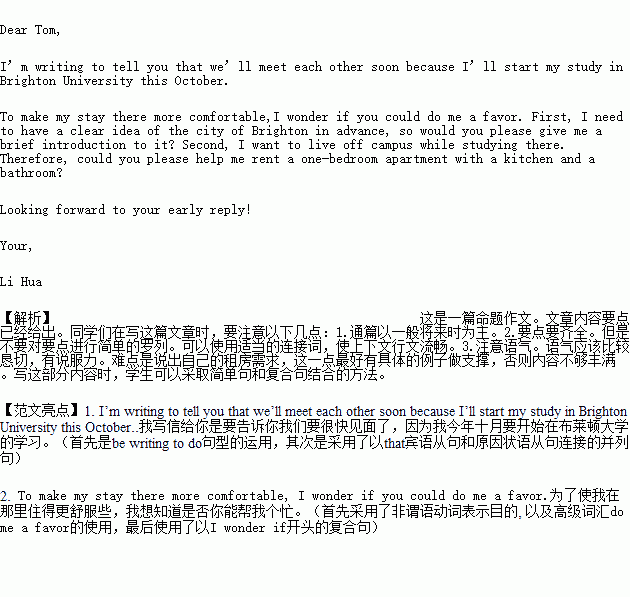题目内容
假定你是李华,今年十月份即将去英国的布莱顿大学(Brighton University)留学。请给你在布莱顿的网友Tom写一封英文电子邮件,让他介绍一下布莱顿这座城市,告知他你的租房需求并请他帮忙租房子。
注意1.词数100左右;
2.可适当增加细节,以使行文连贯。
Dear Tom,
____________________________________________________________________________________________
____________________________________________________________________________________________
____________________________________________________________________________________________
____________________________________________________________________________________________
____________________________________________________________________________________________
____________________________________________________________________________________________
____________________________________________________________________________________________
__________________________________________________________________
Yours,
Li Hua


 listed above all else. Apprenticeships(学徒工作) were considered as a choice for dropouts(辍学者) rather than a brave career choice. Some young men and women didn’t fit into the school system, but preferred to find new starts, so they were allowed to leave school to focus their attention on making a living in the business world.
listed above all else. Apprenticeships(学徒工作) were considered as a choice for dropouts(辍学者) rather than a brave career choice. Some young men and women didn’t fit into the school system, but preferred to find new starts, so they were allowed to leave school to focus their attention on making a living in the business world. ted to lovers only.
ted to lovers only. ),并在其下面写出该加的词。
),并在其下面写出该加的词。 )划掉。
)划掉。